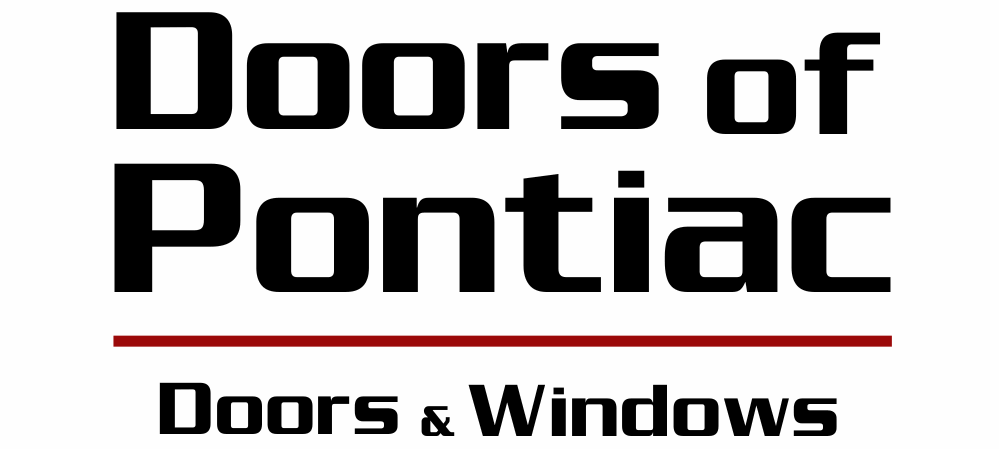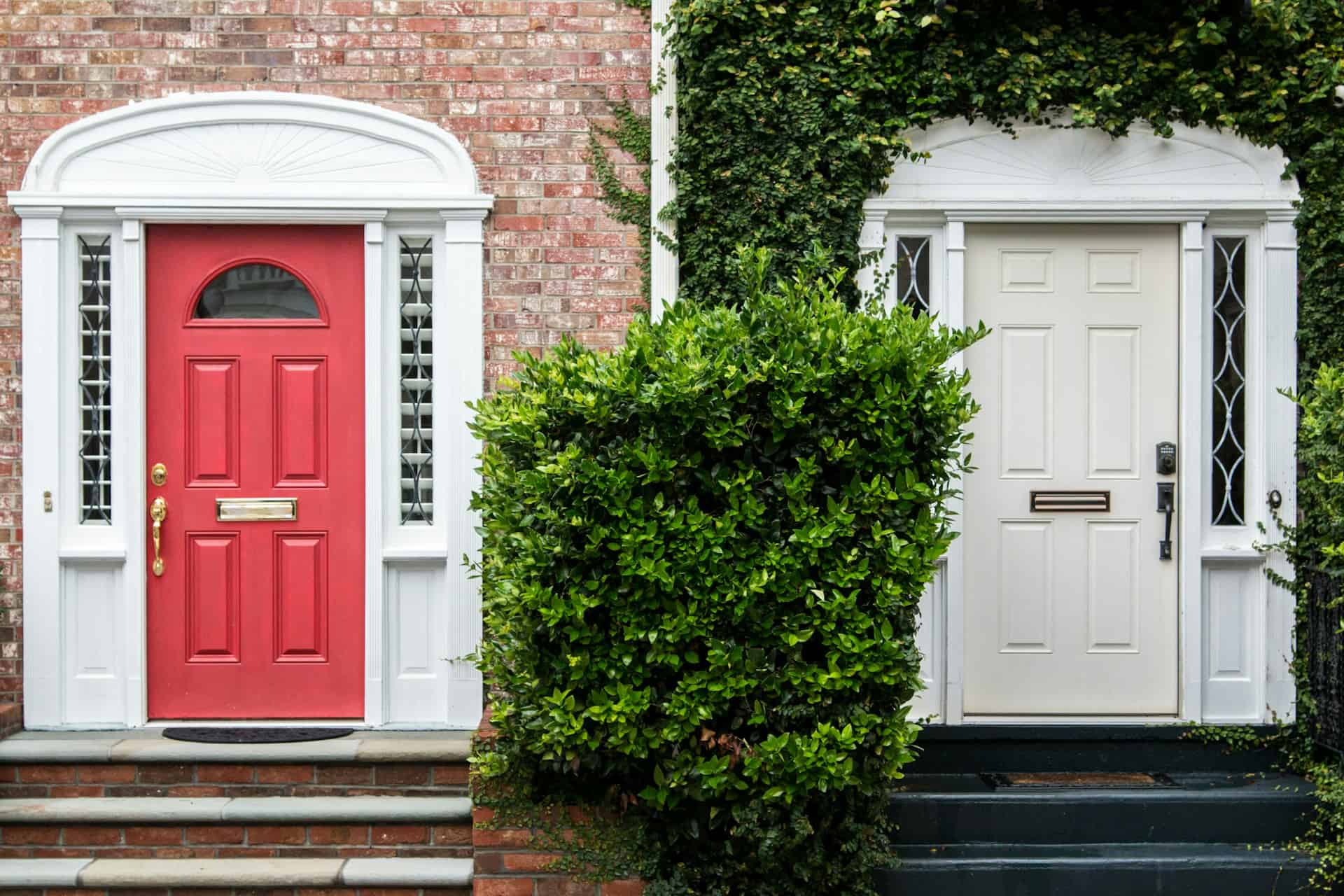The front door sets the tone for your home’s overall aesthetic and can impact its value. It is the first thing guests see before they step inside and the last they see when leaving. Beyond aesthetics, a front door’s functionality and security are equally vital, safeguarding your home against intruders and the elements. With myriad options, homeowners often ponder which front door material is best.
Front Door Materials
The right material for your front door affects not only the appearance but also your home’s durability, security, and insulation. From traditional wood to modern fiberglass, metals, and composite materials, each option offers distinct advantages and challenges.
Wood
Wood has been a prominent choice for front doors for centuries, emanating a sense of warmth, elegance, and classic beauty that is hard to replicate. The material’s versatility allows for a wide design range, from minimalist to ornate, making it suitable for various home styles. Hardwoods like oak, mahogany, and walnut are particularly prized for their durability.
Pros
- Natural beauty and appealing aesthetic
- Versatility in design
- Good insulation properties
- Renewable resource
- Can be painted or stained
Cons
- High maintenance and may require frequent refinishing or repainting
- Susceptible to warping, rotting, and termite infestation
- Vulnerable to extreme weather conditions
Fiberglass
Fiberglass doors offer a modern solution, blending the appearance of wood with enhanced durability and minimal maintenance. These doors use a core of insulating materials covered by a fiberglass composite exterior. The materials feature excellent thermal insulation, making the doors resistant to the elements.
Pros
- Low maintenance
- Resistant to warping, rotting, and termite damage
- Good thermal insulation, potentially lowering energy costs
- Available in various styles, including those that mimic wood grains
- Durable and long-lasting
Cons
- Can be more expensive than wood doors
- May not have the same natural look or feel as wood
- Limited customization abilities
Steel
Steel front doors bring unparalleled strength and security to the entrance of a home, making them an ideal choice for homeowners prioritizing durability and protection. These doors, constructed primarily from steel panels, are resistant to impact, making them less likely to crack or break than wood or fiberglass. Additionally, steel doors offer a higher level of insulation due to the incorporation of foam core insulation.
Pros
- Superior strength and security features
- High resistance to impact and forced entry
- Energy-efficient design
- Various colors and styles available for the finish
- Generally more affordable than fiberglass and some premium wood options
Cons
- Prone to rust if not properly maintained
- Can dent from significant impacts, and repairs may be noticeable
- Conducts temperature
- Limited natural aesthetic appeal
Aluminum
Aluminum front doors stand out for their lightweight yet remarkably sturdy construction. These doors use aluminum frames with either solid panels or glass insets, providing flexibility in design to match any home exterior. Aluminum naturally resists corrosion and rust, making these doors an excellent choice for regions with high humidity.
Pros
- Corrosion-resistant
- Low maintenance
- Lightweight compared to steel
- Offers an industrial, contemporary look
- Good thermal insulation
Cons
- Can be more expensive due to the cost of materials and manufacturing
- Prone to dents and scratches
- Conducts heat and cold
Vinyl
Vinyl front doors are emerging as a popular choice among homeowners who value cost-effectiveness, insulating properties, and environmental sustainability. These doors are made from durable polyvinyl chloride (PVC), guaranteeing exceptional insulation. Further, the affordability of vinyl doors makes them an attractive option for budget-conscious homeowners who want to upgrade their home’s entrance without sacrificing quality.
Pros
- Cost-effective
- Superior insulation
- Lightweight
- Weather-resistant
- Requires minimal maintenance
- Recyclable
Cons
- May fade or discolor over time
- Difficult to repair
- Not as durable as other materials
Glass
Glass front doors add an element of elegance and openness to any home, inviting natural light to illuminate interior spaces. These doors can range from full glass panels that offer expansive views to more modest designs featuring glass inserts for added privacy. Modern advancements have led to tempered or reinforced glass options, significantly enhancing their durability and safety.
Pros
- Maximizes natural light
- Enhances curb appeal
- Modern and elegant designs
- Can be paired with other materials for added strength
Cons
- Less privacy if not frosted or tinted
- More vulnerable to breakage
- Can be more expensive due to material and customization options
- Requires regular cleaning to maintain appearance
- May increase energy costs if not properly insulated
Which Front Door Material Is Best?
All front door materials have unique advantages and disadvantages, so there isn’t a one-size-fits-all answer. The decision ultimately depends on you, the homeowner. When figuring out which front door material is best, consider the following factors:
- Climate and Exposure: Materials like aluminum and composite are better suited for humid or coastal regions due to their resistance to corrosion and rot. In contrast, wood may not be the best choice in areas prone to high moisture levels.
- Aesthetic Appeal: Whether it’s the classic look of wood or the industrial vibe of aluminum, the material should enhance the overall look of your home.
- Maintenance Level: Consider how much time and effort you are willing to invest in maintenance. Wood doors require regular upkeep to prevent rot and maintain their appearance. In contrast, materials like aluminum and fiberglass offer a low-maintenance alternative.
- Security: Materials such as steel and certain types of composite doors offer high levels of security against potential intruders.
- Energy Efficiency: If your priority is to reduce energy costs, consider the door’s insulation properties.
- Budget: While some materials may offer more benefits in terms of durability and maintenance, they might come at a higher cost. Assess your priorities and choose a material that provides the best balance of cost and benefits for your specific needs.
Doors of Pontiac: Find the Best Front Door for Your Home
Every homeowner’s situation is unique, leading to different priorities when selecting door materials. At Doors of Pontiac, we understand the importance of your front door in making a first impression and securing your home. Our door experts are ready to guide you through the selection process, offering insights into the best materials tailored to your needs.
Invest time and effort into knowing which front door material is best. Allow Doors of Pontiac to help you find and get the perfect front door that will complete your home!


